 W
WGirolamo Aleandro, the younger was a very distinguished Italian scholar. His grand-uncle Girolamo Aleandro, the elder (1480–1542) is better known and was the first cardinal appointed in pectore.
 W
WIsabella Andreini, also known as Isabella Da Padova, was an Italian actress and writer. Considered beautiful, elegant, and well educated, she was one of the most famous performers of her time. Isabella Andreini was a member of the Compagnia dei Comici Gelosi, an influential touring theatre company that performed for the highest social circles of Italy and France. Famous in her time, and distinguished both for her acting and her character, the role of Isabella of the commedia dell'arte was named after her.
 W
WGiovanni Baglione was an Italian Late Mannerist and Early Baroque painter and art historian. He is best remembered for his acrimonious and damaging involvement with the slightly younger artist Caravaggio and his important collection of biographies of the other artists working in Rome in his lifetime, although there are many works of his in Roman churches and galleries and elsewhere.
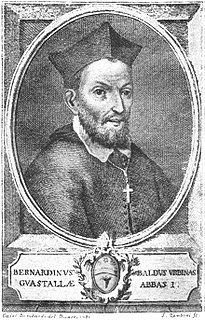 W
WBernardino Baldi was an Italian mathematician and writer.
 W
WNiccolò Barbieri was an Italian writer and actor of the commedia dell'arte theatrical genre. He was also known as Beltrame di Milano in reference to one of his most popular characters, Beltrame; this was the main character of one of Barbieri's best known plays, L'inavertito, which is known to have inspired Moliere's L'Étourdi ou les Contretemps. Besides popularizing Beltrame, Barbieri is also credited with creating another commedia dell'arte mask, Scapino.
 W
WCesare Baronio was an Italian cardinal and ecclesiastical historian of the Roman Catholic Church. His best-known works are his Annales Ecclesiastici, which appeared in 12 folio volumes (1588–1607). Pope Benedict XIV conferred upon him the title of Venerable.
 W
WGiambattista Basile was an Italian poet, courtier, and fairy tale collector. His collections include the oldest recorded forms of many well-known European fairy tales.
 W
WGiovan Battista Boccabadati was born in Modena in February 1635 and died there on October 17 1696. As well as practising and teaching law, he was a mathematician, an engineer and a writer, especially of plays.
 W
WSigismondo Boldoni was an Italian writer, philosopher, and physician. Boldoni was born in Bellano and died in Pavia from the plague shortly before his 33rd birthday. At the time of his death he held the principal chair in philosophy at the University of Pavia. His literary works included a description of the geography and history of Lake Como entitled Larius and the epic poem La caduta de' Longobardi. His letters of 1629 describing the advance of invading German armies in the region around Lake Como and the plague epidemic they brought in their wake were used by Manzoni as a source for his 1827 novel I Promessi Sposi.
 W
WBaldassarre Bonifacio was an Italian Catholic bishop, theologian, scholar and historian, known for his work De archivis liber singularis (1632), the first known treatise on the management of archives.
 W
WMichelangelo Buonarroti il Giovane was a Florentine poet, librettist and man of letters, known as "the Younger" to distinguish him from his granduncle.
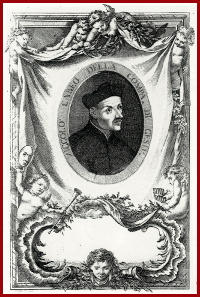 W
WNiccolò Cabeo, also known as Nicolaus Cabeus, was an Italian Jesuit philosopher, theologian, engineer and mathematician.
 W
WTommaso Campanella, baptized Giovanni Domenico Campanella, was an Italian Dominican friar, philosopher, theologian, astrologer, and poet.
 W
WJulius Caesar Capaccio (1552–1631) was a learned Italian of the 17th century. He was born of a humble family, which he ennobled, in Campania. He studied the civil and canon law at Naples, where he became secretary to the city, and one of the founders of the Academy of Oziosi. The duke of Urbino employed him as tutor to his son. He died in 1631, having written at least seven books.
 W
WOttavio Codogno (1570/74–1630) was deputy postmaster general of the Duchy of Milan and author of an extensive guidebook to the postal services, routes and timetables of early 17th-century Europe. His Nuovo itinerario delle Poste went through several reprints in both Milan and Venice.
 W
WLodovico delle Colombe was an Italian Aristotelian scholar, famous for his battles with Galileo Galilei in a series of controversies in physics and astronomy.
 W
WMargherita Costa, singer, poet, playwright and feminist, is the most Baroque of the seventeenth-century Italian women writers and stands out for her original style and themes. As a poet, she employs a variety of genres, using humor and irony to criticize prevailing attitudes towards women and to mock the politics of her times. She is the first Italian woman writer to use humor and satire in her published works. Some of her poems are partially autobiographical for they include allusions to events in her life and complaints about her lack of fortune and literary recognition. Her poetry stresses the obstacles she faced as a woman and the difficult life of women in general. Costa was a prolific writer, publishing two books of prose, six volumes of poetry, three plays, two narrative poems and an allegorical pageantry, in verse, for knights on horseback..
 W
WLeonardo Cozzando was an Italian writer.
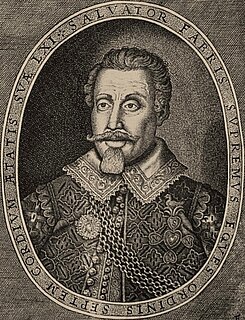 W
WSalvator Fabris (1544-1618) was an Italian fencing master from Padua. During his life he taught in various European countries, most notably in Denmark where he was the fencing instructor of King Christian IV. It was during his time in Copenhagen that he published his treatise on rapier fencing, Lo Schermo, overo Scienza d’Arme, in 1606. The treatise became a fencing bestseller around Europe, and was reprinted until 1713 and translated into several languages, notably into German, and again in 2005, into English.
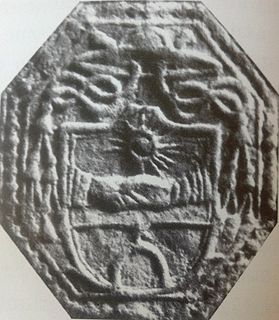 W
WMuzio Febonio was an Italian priest and historian, best known for his historical and agiographic works about Marsica, the Abruzzo sub-region where he was born. In his writings he made extensive use of archive documents and historiographic and archaeological sources, showing a deep knowledge of them, although in a somewhat formal and pedantic style. However, his works represent a valuable source of information for later historians, even if their publication occurred with a lot of errors and delays, which partly explains the limited fame this author enjoyed.
 W
WGalileo di Vincenzo Bonaiuti de' Galilei was an Italian astronomer, physicist and engineer, sometimes described as a polymath, from Pisa. Galileo has been called the "father of observational astronomy", the "father of modern physics", the "father of the scientific method", and the "father of modern science".
 W
WGiovanni Francesco Gemelli Careri (1651–1725) was a seventeenth-century Italian adventurer and traveler. He was among the first Europeans to tour the world by securing passage on ships involved in the carrying trade; his travels, undertaken for pleasure rather than profit, may have inspired Around the World in Eighty Days. Some suspected him of spying for the Vatican on his journey.
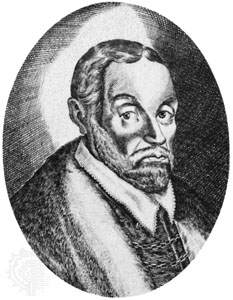 W
WGiovanni Battista Guarini was an Italian poet, dramatist, and diplomat.
 W
WCarlo Giuseppe Imbonati ("Imbonatus") was a Cistercian scholar who was active during the last half of the 17th century. He spent much of his career in Rome and rose to the title of abbot. He was a theologian and a Hebrew scholar who wrote prolifically in his fields. The last known references to the man are dated in 1696.
 W
WVirgilio Malvezzi (1595–1654) was an Italian historian and essayist, soldier and diplomat, born in Bologna. He became court historian to Philip IV of Spain. He used the anagram-pseudonym Grivilio Vezzalmi.
 W
WVincenzo Mirabella Alagona was an Italian historian, archaeologist and architect, best known for his work Plans of Ancient Syracuse.
 W
WLuigi Novarini (1594–1650) was an Italian theologian and scholar.
 W
WMatteo Ricci, was an Italian Jesuit priest and one of the founding figures of the Jesuit China missions. He created the Kunyu Wanguo Quantu, a 1602 map of the world written in Chinese characters. He is considered a Servant of God by the Catholic Church.
 W
WOttavio Scarlattini was an Italian mathematician and writer.
 W
WMariano Valguarnera was an Italian writer and diplomat.